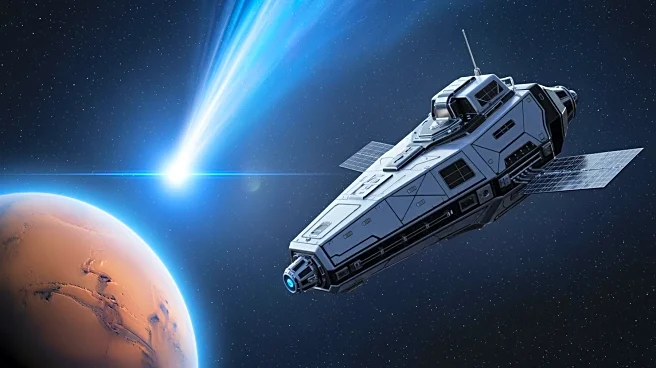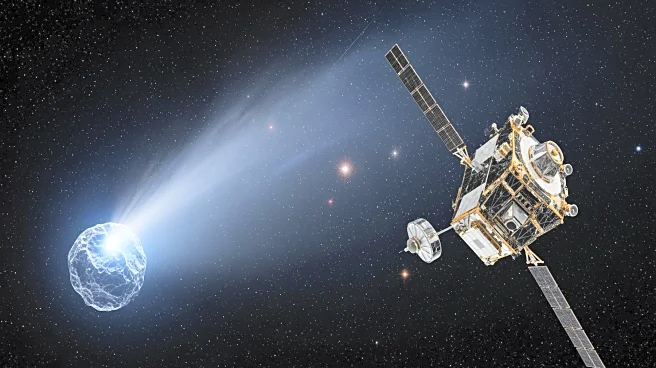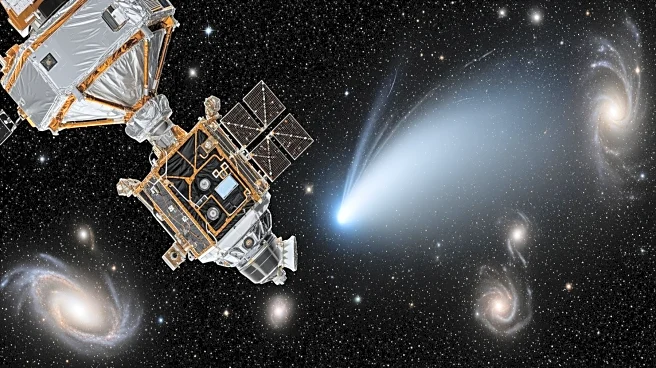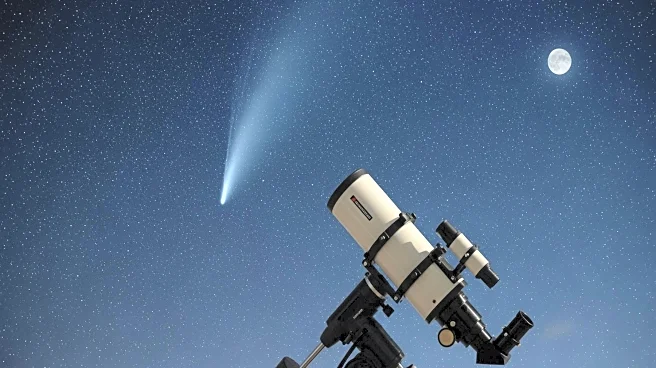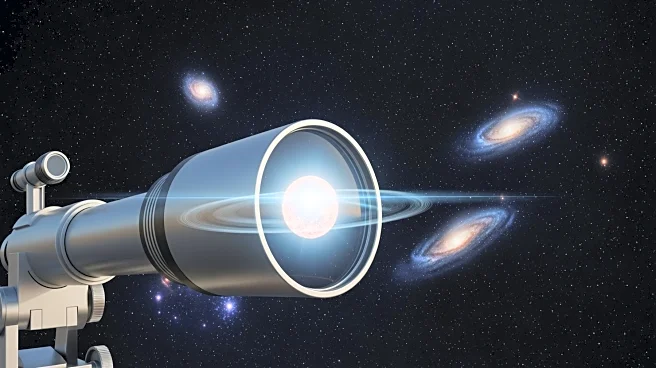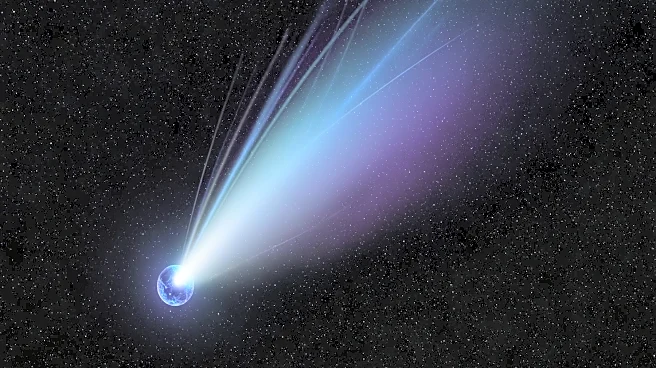What's Happening?
China's Tianwen 1 Mars orbiter has successfully captured images of the interstellar comet 3I/ATLAS during its close approach to Mars. This event marks a significant achievement in the study of interstellar objects,
as 3I/ATLAS is only the third such object confirmed to have entered our solar system. The images were taken using the orbiter's High-Resolution Imaging Camera (HiRIC), which managed to track the comet from a distance of 18 million miles. The operation was challenging due to the comet's faintness and high speed. The images reveal the comet's nucleus and surrounding coma, providing valuable data for further analysis.
Why It's Important?
The imaging of 3I/ATLAS by Tianwen 1 is crucial for advancing our understanding of interstellar objects and their characteristics. This mission not only demonstrates China's growing capabilities in space exploration but also contributes to global scientific efforts to study such rare celestial phenomena. The data collected could offer insights into the composition and behavior of comets originating from outside our solar system, potentially informing future missions and research. Additionally, this success enhances China's reputation in the international space community, showcasing its ability to conduct complex space operations.
What's Next?
Following this successful imaging mission, the data collected by Tianwen 1 will be analyzed to extract more detailed information about the comet's properties. This analysis could lead to new discoveries about the nature of interstellar comets and their potential impact on our understanding of the solar system's formation. Furthermore, the experience gained from this mission will be applied to future Chinese space missions, including the upcoming Tianwen 2 mission, which aims to sample a near-Earth asteroid. The international scientific community will likely continue to collaborate on studying 3I/ATLAS, utilizing data from various space agencies.
